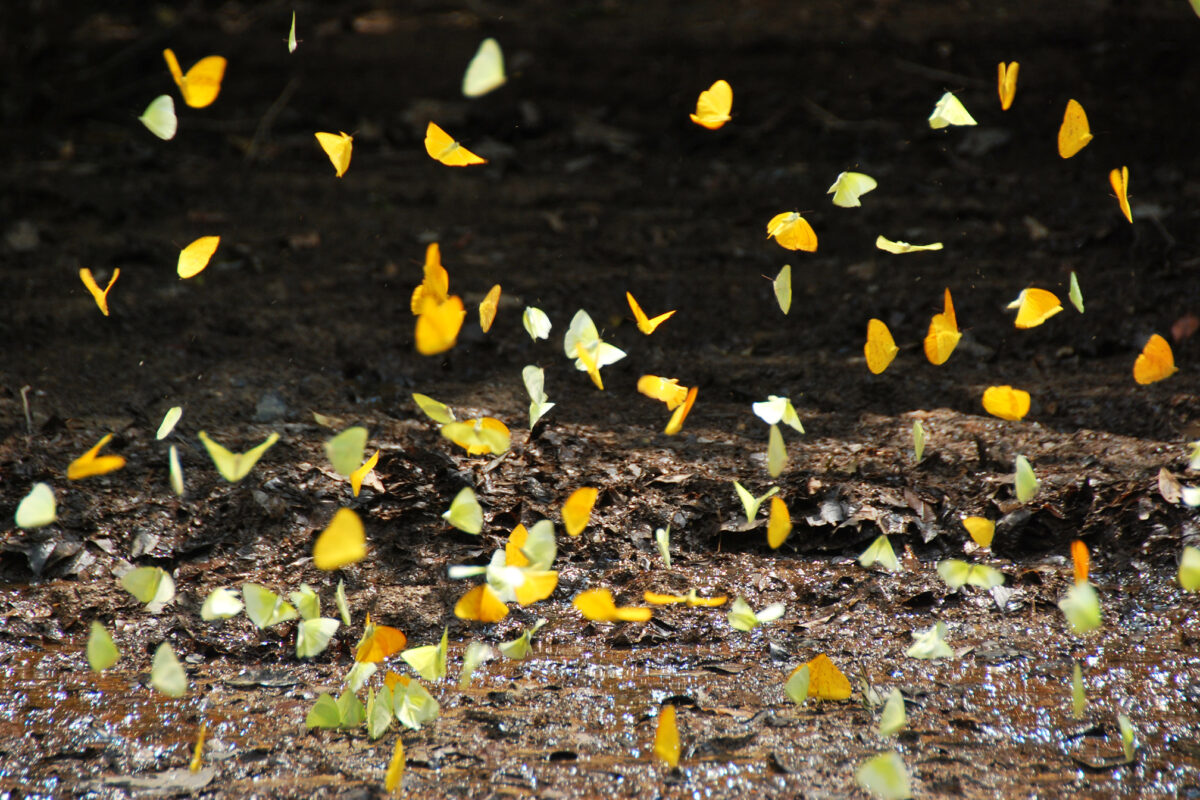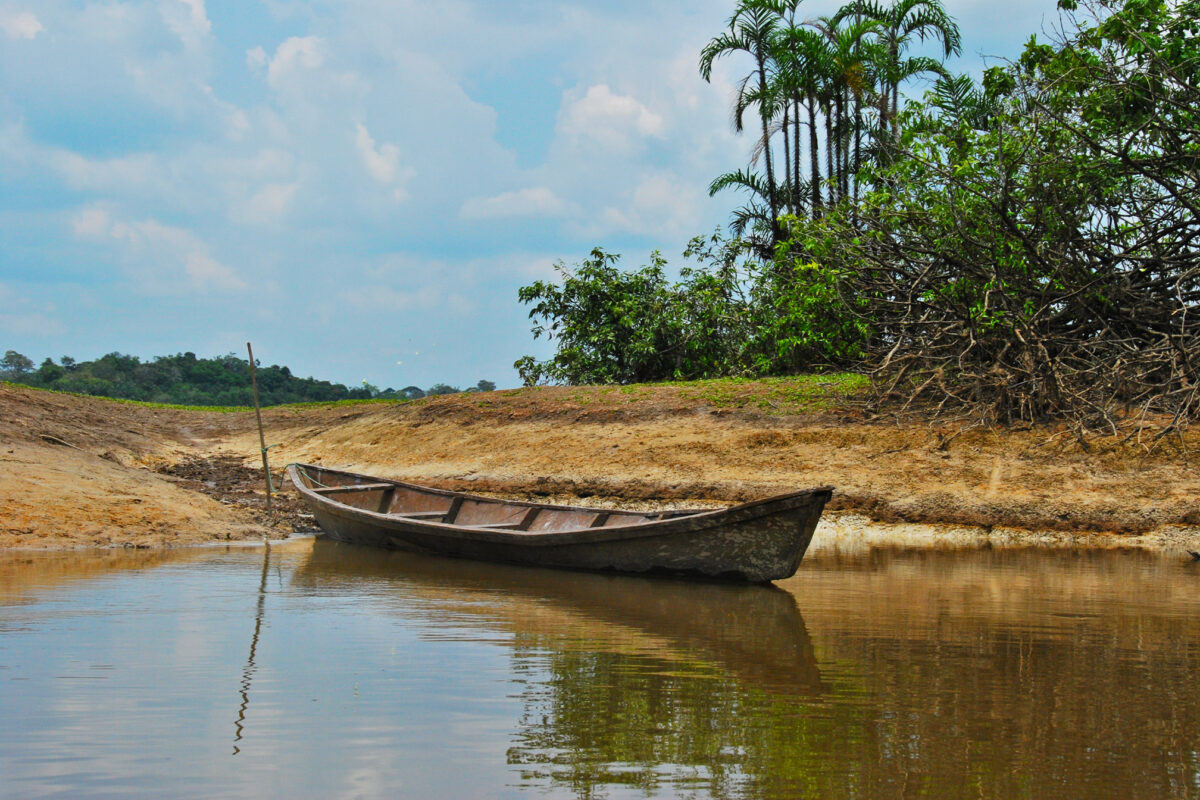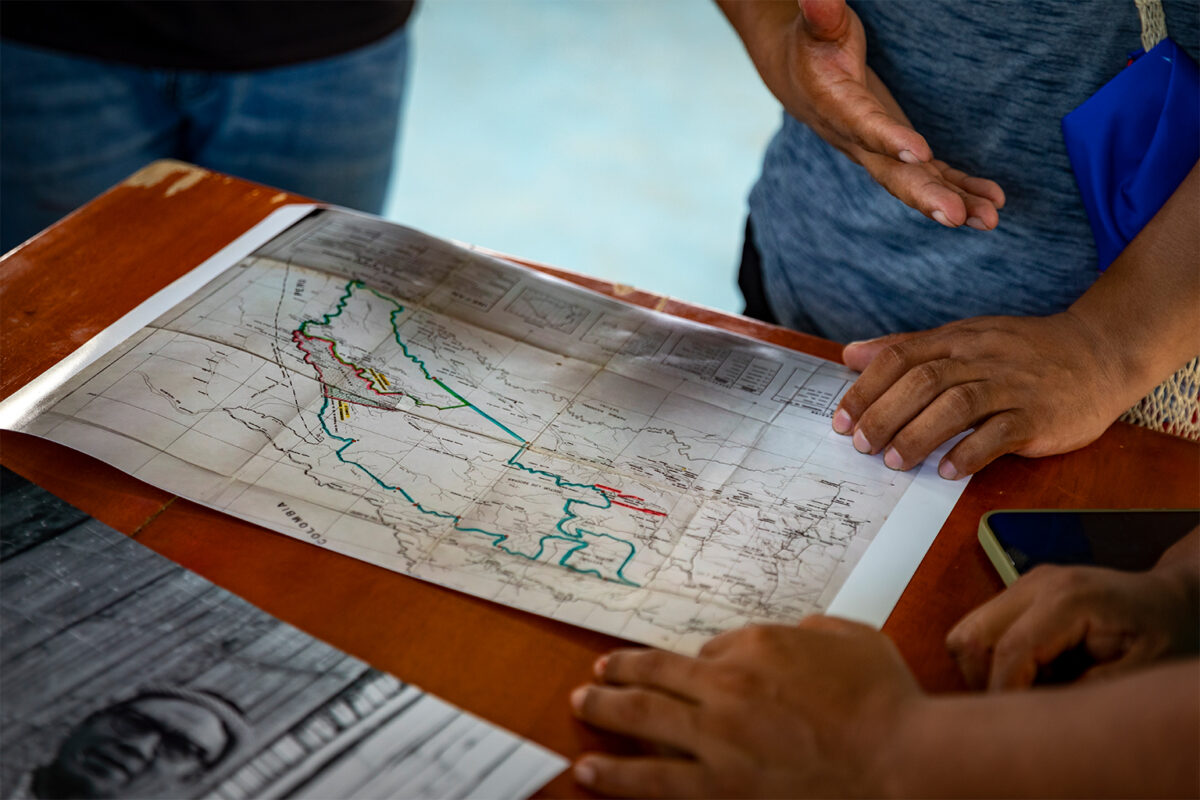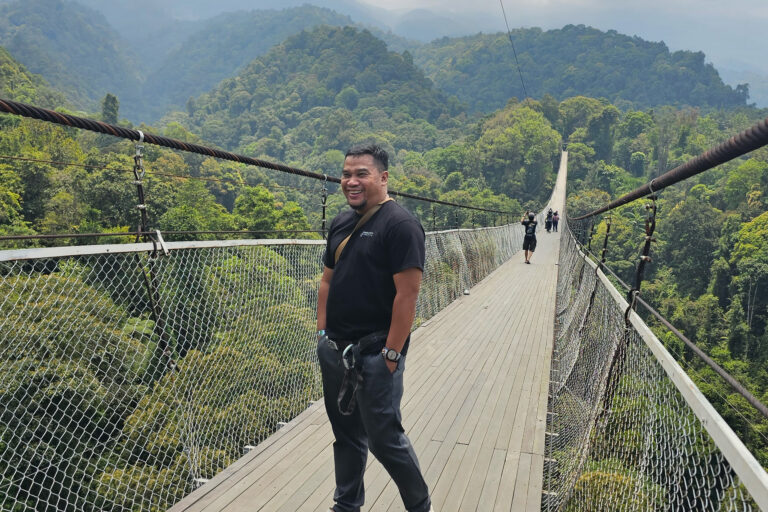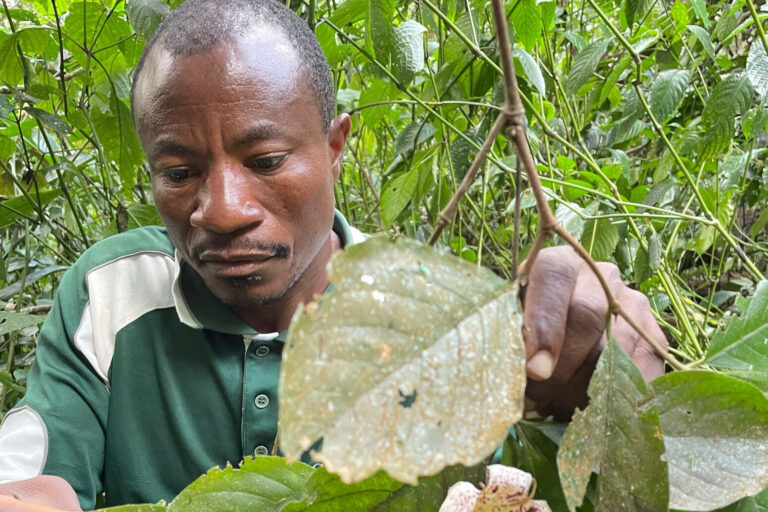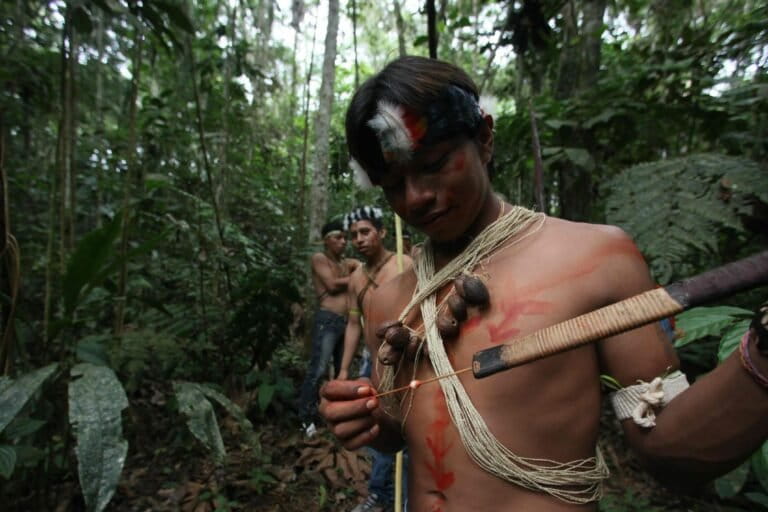- The authors of a new study say they have found 24 previously unrecorded pre-Columbian earthworks in the Amazon, and they estimate there may be more than 10,000 such sites still hidden throughout the forest.
- Ancient earthwork structures represent one of the types of formations found in the Amazon that provide evidence of Indigenous occupation by pre-Columbian earth-building societies.
- An airborne sensor was used to scan data from areas of the Amazon in what the scientists say is “groundbreaking” research.
- This research demonstrates that the Amazon has long been home to Indigenous peoples and is also important for organizations and communities in their efforts to demarcate new Indigenous territories, the general coordinator of the Coordination of Indigenous Organizations of the Brazilian Amazon (COIAB) says.
The Amazon has long been considered home to Indigenous peoples, dating back thousands of years. They worked the land in ways we are familiar with today. They built ditches, ponds, wells and other structures that show the rainforest was not “untouched” as often mistakenly thought. Centuries later, these populations, and the societies they formed, were violently disrupted with the arrival of the first European vessels in the Americas.
The true extent of Amazonian settlements and landscape transformation by these Indigenous populations, however, remains uncertain, despite the best efforts of researchers.
Now, newly published research in the journal Science unveils an unprecedented estimate of the number of pre-Columbian earthworks still hidden in the Amazon rainforest, which is based on both previously known archaeological sites and new findings reported in the study.
In total, researchers have uncovered more than 20 newly recognized earthworks beneath the Amazonian forest canopy, including a fortified village, defensive and ceremonial sites, crowned mountains, megalithic structures and riverine sites on floodplains, all thanks to an advanced remote sensing technology known as lidar, which stands for “Light Detection and Ranging.”
Capable of collecting information on the structure of the forest and on the terrain below the forest, the airborne sensor has revolutionized the way information is obtained about the Earth’s surface by enabling archaeological discoveries in densely forested areas such as the one in the recently published study.
The paper’s authors estimate there may be more than 10,000 earthworks still hidden in the forest, and further identified more than 50 species of domesticated trees that indicate the likelihood of earthwork occurrence, suggesting active Indigenous forest management practices by pre-Columbian societies.

“Our findings clearly suggest that the Amazon had sizable human populations, perhaps totalling 8-10 million people. This number is at the higher end of earlier estimates — and which had been debated for decades by anthropologists,” William Laurance, a tropical ecologist at Australia’s James Cook University in Cairns and a co-author of the study, tells Mongabay via email.
Charles R. Clement, a recently retired senior researcher at Brazil’s National Institute for Amazonian Research, who did not co-author the study but has collaborated with many of its authors, tells Mongabay via email it is, from his interpretation, a clear indication there would have been lots of people across the Amazon, especially in the southern region — “probably millions,” he says.
The findings, researchers say, contribute to the ongoing debate about whether the Amazon Basin once supported the historical presence of large Indigenous populations.
24 new sites
The study involved an intercontinental team of more than 200 researchers from 24 countries who identified 24 previously unreported pre-Columbian archaeological sites in the southern, southwestern, central and northern regions of the Amazon after scanning lidar data from areas totaling 5,300 square kilometers (about 2,045 square miles), which is equivalent to less than 0.1% of the Amazon.
These 24 sites reveal a variety of structures that indicate people were using different parts of the Amazon in different ways.
In the southern Amazon, six archaeological sites that could be part of a fortified village from an ancient city-plaza were discovered in the Upper Xingu Basin in Mato Grosso, a state located in the central-western region of Brazil.
“These villages had peripheral ditches, curbed roads, raised causeways, artificial ponds, dikes, fish weirs, and other earthen structures,” which reveal the existence of “regionally and organized peer polities and an intermediate social form between autonomous villages within the Upper Xingu basin,” Brazilian geographer Vinicius Peripato, a doctoral student in remote sensing at the National Institute for Space Research (INPE) and the study’s lead author, tells Mongabay via email.
In the southwestern Amazon, 10 earthworks that could be defensive and ceremonial sites, known as “geoglyphs,” the researcher says, were found in the municipalities of Senador Guiomard and Rio Branco, in the state of Acre. Peripato explains that the presence of funerary urns within these types of sites, and the absence of anthropogenic soils and ceramics, “are evidence that the use of these structures was limited to religious and community gatherings.”
In the Guiana Shield region, six archaeological sites were discovered in the municipalities of Laranjal do Jari, Ferreira Gomes and Oiapoque, in the state of Amapá. The earthworks found on the crowned mountains, referred to in the study as “permanent settlements,” were used for both “ceremonial and domestic functions,” the researcher explains, while the megalithic structures served only as “ceremonial sites.”
In the central Amazon, two earthworks were found in the municipalities of Boa Vista do Ramos and Óbidos, in the states of Amazonas and Pará, respectively. It is believed that the earthworks in these regions served as riverine sites on floodplains, “that were used to gather aquatic food during the rise and fall of river levels in the Amazonia,” Peripato explains.

Laurance says the study and related work suggest that Amazonian Indigenous groups had sophisticated means of swidden farming, irrigation, village development and defensive fortifications to help repel outside attacks.
“This is causing researchers to re-evaluate their thinking about the technical skills of Native peoples in Amazonia, which were more advanced than many had thought,” asserts the co-author.
The fight for Indigenous land recognition
The research “demonstrates that the Amazon has always been home to Indigenous peoples,” Toya Manchineri, the general coordinator of the Coordination of Indigenous Organizations of the Brazilian Amazon (COIAB), an Indigenous organization that defends the rights of Indigenous peoples to land, health, education, culture and sustainability, tells Mongabay in a phone interview.
He points out that the data are very important, especially at a time when Indigenous peoples in Brazil are “fighting a battle against the marco temporal,” a controversial proposal often referred to as the “time frame thesis,” which would restrict the legal recognition of Indigenous territories throughout the country.
The thesis argues for the invalidation of all Indigenous land claims that were not physically occupied by Indigenous communities on Oct. 5, 1988, the day the Brazilian Constitution was enacted. Although this doctrine was declared unconstitutional by the Supreme Federal Court in September, the Brazilian National Congress approved a bill (PL 2903) with a similar aim, challenging the court’s decision. While the bill was partially vetoed by President Luiz Inácio Lula da Silva, and the time frame thesis was rejected, there is still concern that the veto may be overturned, which is a source of anxiety for Indigenous communities.
Clement says the researchers point out that the earthworks and domesticated forests provide direct evidence of Indigenous habitation spanning centuries, and even millennia, which contribute “to help Indigenous peoples demonstrate that they have a right to these territories.”
He adds that this is very important today, “as the Rural Bench in the Brazilian Congress,” a caucus of more than 300 pro-agribusiness federal lawmakers, “wants to stop all demarcation of Indigenous territories so that Brazilian agribusiness can expand unmolested.”
Manchineri explains that with discoveries such as earthworks, science contradicts the interests of sectors like agribusiness or those involved in the invasion of Indigenous territories. “It’s bad for them because it demonstrates, with scientific quality, that Indigenous peoples have always lived in the Amazon and that the actions of the state itself have been decimating various Indigenous populations.”
He says the data in the recently published study are also important for Indigenous organizations and peoples in their efforts to demarcate new Indigenous territories. The archaeology, he further adds, through the discovery of archaeological sites, has been revealing “where, how and for how long Indigenous peoples lived in the past.”
He explains that it’s not as if Indigenous peoples would now want to reclaim cities, but rather that the Brazilian state at least acknowledges the harm that has been done to these Indigenous populations: “To assist those who are still alive, in the best possible way, so that they can increasingly strengthen themselves as indigenous peoples.”
Manchineri also cautions, “Otherwise, given the current level of invasion, we will be at the mercy of many challenges.”

Thousands of earthworks may still be hidden
The study’s authors say their findings may serve as the foundation for uncovering much more extensive evidence of Indigenous habitation, as the researchers estimate that between 10,272 and 23,648 earthworks may still be hidden beneath the Amazon Rainforest. The estimate was achieved by combining the 24 newly detected structures with the more than 900 previously recorded earthworks and advanced statistical modeling.
The figure suggests that the previously documented earthworks in the Amazon account for less than 10% of the total, with more than 90% of Amazonian earthworks remaining undiscovered, according to the research.
The scientists have also shown the noteworthy correlation that “domesticated [tree] species are positively related to the probability of earthworks in the area,” Hans ter Steege, a researcher at the Naturalis Biodiversity Center and a professor at Utrecht University in the Netherlands who co-authored the paper, explains to Mongabay via email.
The connection was established by comparing the likely locations of earthworks with historical records of domesticated tree species across the Amazon. Out of nearly 80 such species, 53, including cacao (Theobroma cacao), cupuaçu (T. grandiflorum), peach palm (Bactris gasipaes), Brazil nut (Bertholletia excelsa) and others, many of which are still being used, overlapped with probable earthwork sites, ter Steege says.
In this regard, Clement notes that unlike the Middle East, “where Euro-American society and agriculture originated,” the Amazon was inhabited by people engaged in arboriculture, “the culture of trees, forests, and gardens.” The researcher mentions, “There was no agriculture before European conquest. Yet, Amazonian ecosystems, especially forests, fed millions of people. What can society learn from this?”
Manchineri says he believes such results strengthen the view that Indigenous peoples have a lot to contribute to the country’s development. “It’s a shame that leaders don’t see it that way.”
He suggests that perhaps the large-scale agriculture system today could look at Indigenous knowledge from a different perspective, “and try to adapt so that we could work on large-scale agriculture without harming the environment too much.”

A non-uniform distribution
Ancient earthwork structures with social, ceremonial and defensive functions, such as ring ditches, geoglyphs, ponds and wells constructed using earthmoving techniques, represent one of the types of pre-Columbian formations found in the Amazon and provide evidence of Indigenous occupation in the basin by earth-building societies.
The study suggests that pre-Columbian societies were engaged in such constructions in all regions of the Amazon, “covering a broader area than previously thought,” though these sites were not uniformly distributed, as earthworks are likely more concentrated in certain regions, especially in the southwestern Amazon.
“We predict that 90% of the Amazon forest has a very low chance of having earthworks … so this type of modification on Amazonian forests may have taken place mostly in 10% of its area.” ter Steege states in a press release.
The study’s lead author explains that the occurrence of earthworks is more common over the transitions of the rainforest to the savannas, in locations that combined environmental conditions that “probably facilitated the construction of earthworks by offering periods with less precipitation and higher temperatures and soils with better texture for earthmoving.”
Laurance adds that Indigenous groups “were evidently much less common, perhaps even absent, from tracts of deep rainforest, wetter areas where fire-based farming is difficult, and the large expanses of the basin that have nutrient-starved soils.”
He further says the study reinforces previous perspectives that argue that Indigenous populations in the Amazon were “largely confined to drier or marginal areas where fire-based agriculture was much easier than in wetter areas.”

A ‘domesticated’ biome
Clement says the newly revealed findings go against people’s belief that the Amazon was “the last frontier, almost untouched by human hands until European conquest and modern deforestation and fire.”
However, he opposes the idea that human cultures would have been limited and determined by the environment. Instead, the researcher, as well as others, supports the assumption that human cultures have modified the environment as desired, just as they do today. “The Amazon was not untouched as most people imagine, but was thoroughly domesticated by Indigenous peoples, who were wiped out by European slavery, diseases and warfare.”
Peripato explains that the suggestion that at least 10% of the Amazon might have been modified by pre-Columbian societies “is based on that single and specific type of pre-Columbian formation,” meaning earthworks. However, Clement says, “not all societies moved earth in large amounts.” This means there are other types of archaeological evidence in the Amazon that indicate different forms of occupation and transformation of the landscape by Indigenous peoples.
“If [you] account for all the types of pre-Columbian records, like anthropogenic soil and ceramics, the extent of the modification of pre-Columbian societies throughout Amazonia can be proven to be higher,” Peripato asserts.
The soil to which he refers, also known as Amazonian black earths, is a nutrient-enriched anthropogenic soil widely accepted as an indication of long-term settlement by pre-Columbian societies, which have been found especially in sites in the central and eastern Amazon.
Clement says there are also the domesticated forests themselves, which are likely contained in areas similar to those where pre-Columbian earthworks occur but also in other areas.
He adds that all of this archaeological evidence can be found in varying sizes along both large and small rivers, and since there were also some Indigenous peoples who did not typically settle down, there can be more scattered as well as “even smaller and more ephemeral” sites.
The researcher mentions that wherever archaeologists survey, they find new sites, “sometimes with earthworks, often without them,” and he asserts that the entire Amazon was domesticated, “but that does not mean that every tree or palm has been planted. There are lots of ways to make a domesticated forest.”
Clement further continues: “Some Indigenous peoples built earthworks, some didn’t. Some practiced farming, some didn’t. All managed their forests to enhance availability of food.”

There is controversy about this in the scientific community, and others have critiqued this interpretation of a domesticated Amazon, arguing instead that “dense and sedentary populations” would have been found “in resource-rich areas, such as along the main Amazon river channel.”
In any case, a notion of a historically intact and people-free Amazon influences modern struggles. Clement says such an image aids dreams of conservation of forests without their people, either Indigenous or traditional, as well as dreams of development. “Brazil’s vigorous agribusiness says that empty forests should be substituted by waving fields of grain, for example industrial monocultures of soy, maize, cotton and pasture, to feed the world.”
Groundbreaking research
Peripato explains that this study advances knowledge in three main areas, one of which is “archaeology itself through innovative discoveries and highlighting several areas for archeological prospection.”
He says in the field of environmental sciences, the advancement lies in demonstrating the level of human interference in the region, “which may have implications for its current functioning and how we model its future.”
In applied computing, the researcher highlights an advancement in the ability to analyze thousands of points within the data collected by the lidar sensor, which “operates using laser pulses to measure distances and create detailed representations of the terrain, objects, and structures in our environment.”
The statistical modeling that allowed the estimation of the number of pre-Columbian earthworks still hidden in the forest is another breakthrough in this field. “We used the 24 new discoveries, along with previously cataloged structures up to that point, and developed a probability model for the entire Amazonia,” the study’s lead author explains.
Laurance states that the study helps to settle the long-running debate about the number of Native peoples who formerly occupied the Amazon, “clearly favoring higher numbers.”
It is, he says, groundbreaking research. “This type of work, at this massive scale, hasn’t been done before.”
Banner image: An earthwork on Amazonian landscape. Image courtesy of Diego Lourenço Gurgel.
Citations:
Peripato, V., Levis, C., Moreira, G. A., Gamerman, D., Steege, H. T., A. Pitman, N. C., … O.C. Aragão, L. E. (2023). More than 10,000 pre-Columbian earthworks are still hidden throughout Amazonia. Science. Retrieved from https://www.science.org/doi/10.1126/science.ade2541
Meggers, B. J. (1996). Amazonia: Man and culture in a counterfeit paradise. National Geographic Books.
McMichael, C. H., Palace, M. W., Bush, M. B., Braswell, B., Hagen, S., Neves, E. G., … Czarnecki, C. (2014). Predicting pre-Columbian anthropogenic soils in Amazonia. Proceedings of the Royal Society B: Biological Sciences, 281(1777), 20132475. doi:10.1098/rspb.2013.2475
Levis, C., C. Costa, F. R., Bongers, F., Peña-Carlos, M., Clement, C. R., Junqueira, A. B., … Steege, H. T. (2017). Persistent effects of pre-Columbian plant domestication on Amazonian forest composition. Science. Retrieved from https://www.science.org/doi/10.1126/science.aal0157
McMichael, C. H., Piperno, D. R., & Bush, M. B. (2015). Comment on Clement et al . 2015 ‘The domestication of Amazonia before European conquest’. Proceedings of the Royal Society B: Biological Sciences, 282(1821), 20151837. doi:10.1098/rspb.2015.1837



